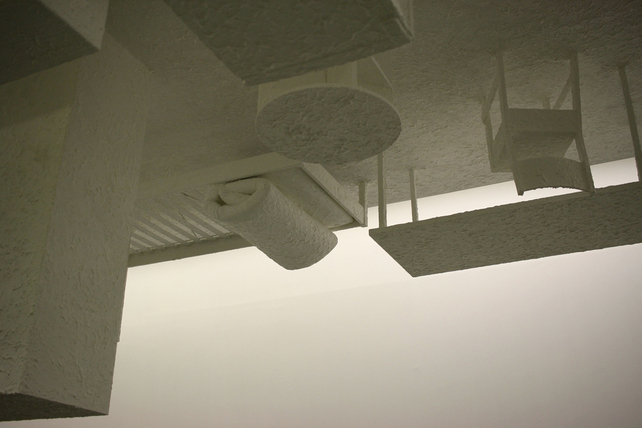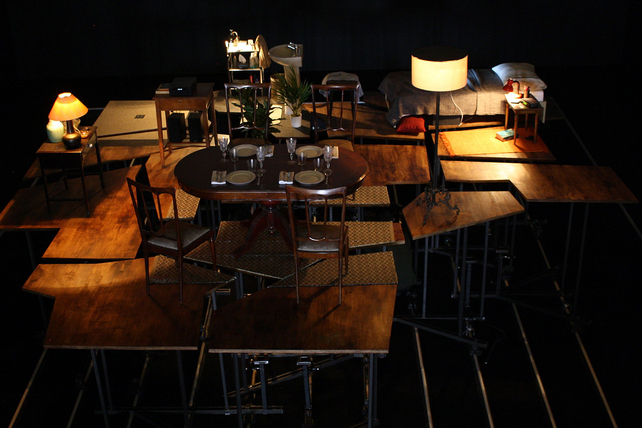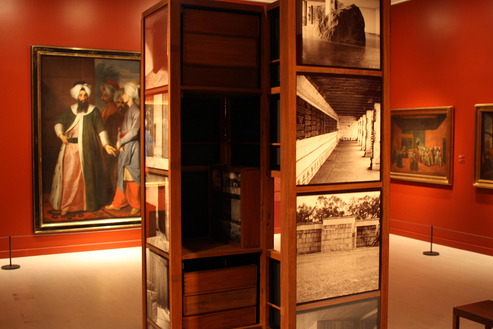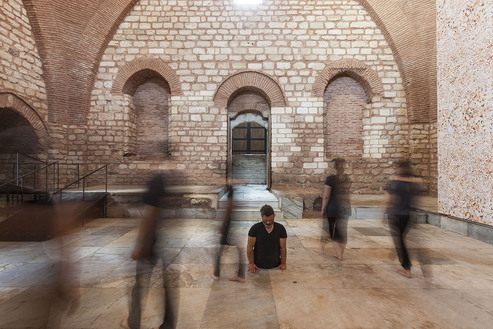
R
E
V N
E
X
T
Fourteen months ago, in the days immediately following the failed military coup d’état in Turkey, and just two and a half weeks after a terrorist attack by ISIS members on Istanbul’s main international airport on June 28, the 15th Istanbul Biennial, scheduled for September 2017, might have seemed like an unlikely possibility to many in the international art world. Yet I never had any doubts. In response to skeptical inquiries, I would always relay a variation of what the Biennial’s director Bige Örer had conveyed before: the Biennial would happen, no matter what. To their credit, in August 2016, curators Michael Elmgreen and Ingar Dragset were in Istanbul, proceeding with their research with the team at the Istanbul Biennial’s parent organization İKSV (the Istanbul Foundation for Culture and Arts), even as the country was still recovering from the shocks of the preceding months.
Yet given the conditions in Turkey and the government’s aggressive response to the attempted coup (including the arrest and incarceration of tens of thousands of people, including more than one hundred journalists), I wondered how Elmgreen & Dragset’s Istanbul Biennial would, or wouldn’t, address the extremely fraught and precarious politics of the moment. The Biennial’s title, “a good neighbour,” was meant to question the rapid social transformations taking place in Turkey (and elsewhere), but also indicated to me that the event would adopt an ameliorative tone rather than a confrontational one. But this doesn’t mean that it is a timid exhibition. Visitors can quickly realize the many references to Turkey’s current turmoil and politics—even if they are not explicitly stated. It was not only through metaphors that artists addressed urgent topics; in several notable instances, their portrayals of current realities were explicit.
Istanbul Modern
The works in Istanbul Modern reflected on various aspects of urban transformation. The first work inside the museum, The Silence and Eloquence of Objects (2017) by Young-Jun Tak, was a white-painted, four-by-six-meter replica of the artist’s Seoul tiny apartment installed upside down on the ceiling, and was meant to echo the cramped and solitary living conditions of many young people in booming cities with sky-high rents, though the work didn’t compel extended contemplation. More striking was Latifa Echakhch’s corridor lined with frescoes of groups of people, Crowd Fade (2017), which the artist had painted on the walls and then chipped off onto the floor, and the messy canvases and wall collages of layered paper scraps by Yonamine that imitated the aesthetics of urban streets. Rayyane Tabet’s installation Colosse Aux Pieds D’Argile (2015) was made from columns found by the artist that came from an old family home in Beirut that was being deliberately destroyed to make room for new apartment towers. It was paired with young artist Alper Aydın’s literal sculpture, D8M (2017), of a bulldozer’s claw pushing a pile of tree branches into the gallery’s corner, which immediately evoked countless recent instances in Turkey when natural areas have been brutally razed.
Human relations in the context of cities were addressed in Volkan Alsan’s three-channel film Home Sweet Home (2017), which depicts two women cohabitating on a boat that is cruising along the Bosphorus with an apartment on top of its cabin, in Candeğer Furtun’s sculpture of nine pairs of male legs arranged in a row on a tiled bench that recalled a hammam, and Victor Leguy’s project made from objects donated by Arab exiles he met in Istanbul’s Arabic-language bookstore The Pages. Kim Heecheon’s video Lifting Barbells (2016) shared the perspective of a young city-dweller, agonizing over GPS-tracking, surveillance and digital intrusion into our lives through letters in Spanish to the character’s girlfriend in Argentina. Throughout, the connections between works were prosaic but not didactic, eclectic in their national contexts while displaying shared sentiments of concern for the future of cities around the world.
Galata Greek Primary School
The Biennial’s strongest venue was the Galata Greek Primary School. Pedro Gómez-Egaña’s installation Domain of Things (2017) occupied a central location in the building, and featured performers moving around objects of furniture that were perched high on wheeled platforms. Ali Taptik’s photographs of the city filled the walls of the stairwells and visitors could link, via a QR code, to www.friendsandstrangers.net, where stories of three individuals are revealed through interviews. Olaf Metzel’s piece Sammelstelle (1992/2017), a room lined with corrugated metal with a revolving metal gate at its entrance strongly evoked refugee and internment camps—as relevant to the Europe of today as it was during the early 1990s, when it was made in response to the refugees in Germany fleeing sectarian wars in the former Yugoslavia countries.
The real gut-punch—and the ultimate repudiation to anyone who says the Istanbul Biennial avoids confronting political issues—comes in the video by Erkan Özgen featuring a deaf boy from Kobane, the Kurdish city on the Turkish-Syrian border, which was occupied by the so-called Islamic State and then liberated from their control. The child recounts his memories of the fighting using only gestures in a horrific testimony that pushes into the territory, like an Artur Żjimeski project, how of probing how much brutality an artwork can, and should, represent. Similarly outspoken was Mahmoud Obaidi’s project Compact Home Project (2003–04), which comprises handmade books that contain physical traces of Iraq’s recent history, with metal sheets as their covers and that come in old suitcases—evoking the country’s displacement through its destruction by the United States-led coalition. More metaphorical was the jarring clash of aesthetics found in Jonah Freeman and Justin Lowe’s installation, Scenario in the Shade (2015–17), which portrayed, through a series of rooms, the many distinct Southern California subcultures. Stepping into vastly different worlds that been have clustered was an experiential event, like snooping around in all the houses on one’s street. Perhaps most neighborly of all were Andrea Joyce Heimer’s paintings and hand-written captions of recollections from growing up in a small-town community in the United States.
Pera Museum
Highlights from the Pera Museum were a room of Gözde İlkin’s fabric collages made from fabrics obtained from her family, depicting scenes from their time spent together. There was also a tightly curated display in one room with works by five artists, including a Louise Bourgeois print, a video by Monica Bonvicini of someone with a miniature house on their head banging their head against a wall, and Aude Pariset’s child’s crib full of writhing worms. Fred Wilson’s project Afro Kismet (2017) featured Ottoman-era prints masked in tracing paper with cutouts to reveal tiny African figures, and a bold pairing of black-Murano-glass chandeliers with tiles made in an unconventionally dark palette at the famed İznik tile factories. In the same vein, Dayanita Singh looked at museological practices in Museum of Shedding (2016), which arranges her black-and-white photographs to be viewed as part of a set of custom-made furniture.
Küçük Mustafa Paşa Hammam + ARK Kültür + Yoğunluk Atelier
Provocative works by Monica Bonvicini occupied the men’s section of the 15th-century Küçük Mustafa Paşa Hammam—the only venue not located in Beyoğlu. Her massive digital collage made of women’s legs from fashion magazines was matched with stacks of the word “GUILT” in reflective steel, and a black cube wrapped in leather belts, continuing her interest in riffing on minimalist forms with materials that evoke the body and cultural rituals of bondage and submission. Tuğce Tuna’s 45-minute dance performance Body Drops, held in the same venue, was similarly bold in its choice of actions and casting, mixing able-bodied performers with two that have physical disabilities.
Mahmoud Khaled’s transformation of the Bauhaus-style cultural center (which was once a private home), ARK Kültür, into the fictionalized residence of an Egyptian man who is escaping persecution and obsessed with the figure of the “crying boy,” was a unique Biennial work that was perfectly suited for the site and the city, and reminiscent of Orhan Pamuk’s nearby Museum of Innocence. The performative installation at the Yoğunluk Atelier in the Asmalımescit district was not quite as engaging—it was a pitch black room of domestic spaces imperiled by what at times sounded like an earthquake, but was nevertheless an attempt to cross boundaries of artistic disciplines.
It is of course a bit facile to say the 15th Istanbul Biennial displays many of the traits of its artist-curators and their own works—but it seems accurate. The Biennial is handsomely produced and installed, sensitive to the contexts that artists are addressing and to Istanbul itself. There is an enthusiasm for immersive installations and theatrical scenarios. It’s sincere, and honest about politics, even when being metaphorical. Above all, what the Istanbul Biennial is trying to do is to be that “good neighbour” in exhibition form—one that is generous in listening and responding to communities, and in giving artists a generous platform for their works. At this moment in Turkey, perhaps being understated, while not letting things go unstated, is the way to survive and start rebuilding for the future.
Part 1 of this blog can be read here.
A full review by Istanbul-based writer Naz Cuguoğlu will be published in ArtAsiaPacific Issue 106 (Nov/Dec).
HG Masters is editor at large of ArtAsiaPacific.
The 15th Istanbul Biennial is on view at six venues in the city until November 12, 2017.
To read more of ArtAsiaPacific’s articles, visit our Digital Library.







